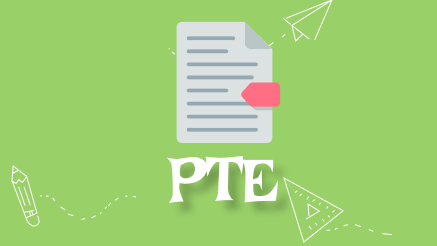The Pearson Test of English (PTE) is a computer-based English language proficiency exam that assesses the reading, writing, listening, and speaking skills of non-native English speakers. The test is designed to measure a test-takers ability to communicate effectively in real-life situations using the English language. PTE offers various modules to evaluate different language skills.
Here, we will be discussing the reading module that evaluates your reading comprehension skills. You will encounter various question types, such as multiple-choice, multiple-answer, re-order paragraphs, and fill-in-the-blanks based on the given text passages. There are several strategies to increase your chances of obtaining points in PTE Reading which will be discussed in this blog.
Practice boosting your reading speed and comprehension at the same time to increase your reading skills. As a result, your writing, grammar, and vocabulary will improve.
To do well in this section of the test, you must be able to read swiftly and effectively, as there is limited time to answer all questions.
- Speed reading exercises might help you enhance your reading speed. Every day, do speed reading and aim to read at least 220 words per minute.
- Reading brief articles of 300 words or less
- Reading often for short periods of time
You might also make this a challenge with your pals to help you stay motivated. Once you’re satisfied with your understanding and speed, shift your attention to chunks (groups of words) rather than individual words.
When your reading abilities have reached a satisfactory level, you will be more confident in answering the questions.
Multiple-choice, single-answer
Some test takers make the error of scanning the text and matching the words in the text to the words in the response when answering Multiple-Choice, Single response questions. Because the words in the text are generally not utilized in the right answer, it is critical to understand how to use synonyms and paraphrase, as they will be used in the test.
Multiple Choice, Multiple answers
You will require more time for this question type than for the Multiple-Choice, Choose Single Answer question type since you will need to read the stem (the portion before the options) as well as the options, then scan. Read the words on the screen until you discover the section that contains the information from the stem.
Read the options carefully and match the option’s meaning to the text. Do not match the words – this is an area where test takers may make mistakes.
You should also avoid selecting all of the alternatives because each erroneous pick costs you one point. You cannot, however, score less than zero.
Reorder paragraphs
To do well on the Re-order Paragraphs problems, you must grasp coherent devices and how they operate. You’ll also need to grasp how articles function, as well as how content is organised logically and chronologically.
In this question type, skim-read the material to generate thoughts about the topic. Following that, you should carefully read all of the phrases.
Fill in the blanks and reading & writing: fill in the blanks
In this question type, skim-read the material to generate thoughts about the topic. Following that, you should carefully read all of the phrases.
You will need to grasp a variety of vocabulary, collocations, syntax, pronouns, and cohesive devices, as well as be able to determine when plural nouns are required, for both Fill in the Blanks and Reading & Writing: Fill in the Blanks question types.
You must also be able to skim read to acquire a sense of the meaning of the text before reading attentively before and after each blank. If you are unsure, make an educated assumption based on the circumstances.
Make certain that no blank spots are left. You are not need to correctly fill in all blanks.
It’s important to note that PTE test formats and question types may change over time, so it’s recommended to visit the official PTE website or relevant resources for the most up-to-date information about the test modules and their specific requirements. Additionally, the test scoring is done by automated scoring systems, which evaluate your responses based on predetermined criteria.
Before taking the PTE exam, it’s a good idea to familiarize yourself with the specific requirements and scoring criteria for each module to ensure you are well-prepared for the test.
Team Crosslink wishes you All the best!





